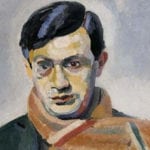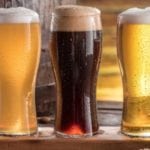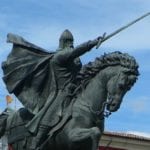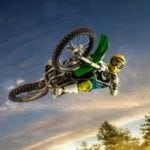 Music
Music  Music
Music  History
History 10 Less Than Jolly Events That Occurred on December 25
 Weird Stuff
Weird Stuff 10 Funny Ways That Researchers Overthink Christmas
 Politics
Politics 10 Political Scandals That Sent Crowds Into the Streets
 Weird Stuff
Weird Stuff Ten Bizarre Facts About The Doge Meme
 Our World
Our World 10 Ways Your Christmas Tree Is More Lit Than You Think
 Movies and TV
Movies and TV The 10 Coolest Stars to Set Sail on The Love Boat
 History
History 10 Things You Didn’t Know About the American National Anthem
 Technology
Technology Top 10 Everyday Tech Buzzwords That Hide a Darker Past
 Humans
Humans 10 Everyday Human Behaviors That Are Actually Survival Instincts
 Music
Music 10 Surprising Origin Stories of Your Favorite Holiday Songs
 History
History 10 Less Than Jolly Events That Occurred on December 25
 Weird Stuff
Weird Stuff 10 Funny Ways That Researchers Overthink Christmas
Who's Behind Listverse?

Jamie Frater
Head Editor
Jamie founded Listverse due to an insatiable desire to share fascinating, obscure, and bizarre facts. He has been a guest speaker on numerous national radio and television stations and is a five time published author.
More About Us Politics
Politics 10 Political Scandals That Sent Crowds Into the Streets
 Weird Stuff
Weird Stuff Ten Bizarre Facts About The Doge Meme
 Our World
Our World 10 Ways Your Christmas Tree Is More Lit Than You Think
 Movies and TV
Movies and TV The 10 Coolest Stars to Set Sail on The Love Boat
 History
History 10 Things You Didn’t Know About the American National Anthem
 Technology
Technology Top 10 Everyday Tech Buzzwords That Hide a Darker Past
 Humans
Humans 10 Everyday Human Behaviors That Are Actually Survival Instincts
10 Semi-Legendary Kingdoms Of Modern National Groups
All people and nations have origin stories. Some of these tales are based on reasonably accurate records. However, some are made-up or embellished versions of oral stories handed down throughout the centuries. Modern people groups with long histories often have a wealth of mythology that doesn’t exactly coincide with the historical records.
10 Van Lang

The semi-legendary kingdom that would later become modern Vietnam was known as Van Lang. It was ruled by the Hung dynasty, who sat atop a hierarchical society of marquises and under-kings. These nobles lorded over the Lac, the peasant class whose name meant “ditch” or “canal.” (This word was actually the earliest name used for the Vietnamese people.) It’s said this culture was based on rice paddy agriculture and the diverting of rivers, but there is little material evidence to support its existence.
Van Lang was said to have been conquered by the kingdom of Thuc, a civilization located in the modern-day Sichuan region of southwestern China. The Thuc king was the legendary An Duong Vuong, a man who supposedly used a magical crossbow to defeat the Hung kings and defend his empire.
In reality, the power of the Thuc kingdom may have been bolstered by Yueh refugees fleeing the expansion of the Chinese state, which was expanding into what is now southern China. Either way, the conflicting interests between Thuc and Van Lang were immortalized in Vietnamese mythology in the fabled battle between the powerful Mountain Spirit and the aggressive Water Spirit.
Eventually, Thuc and Van Lang were combined into the kingdom of Au Lac. The name is believed to be derived from the goddess Au Co and a kind of bird called a lac. This composite kingdom would form the nucleus of the later kingdom of Nam Viet. This society would be increasingly influenced by both Indian and Chinese culture, but while it left some historical records behind, the history of Au Lac is wrapped in stories of myth and legend.
9 The Piasts

The founding date of the Polish state is usually given as AD 966, but this was actually the year that the Polish king, Mieszko I, converted to Catholicism. Under this Christian king, the Polish people were introduced to their first royal dynasty: the Piasts. But where did the Piasts originally come from? Well, their origin story is shrouded in legend.
Initially, Polish culture was organized into fortified settlements ruled by military leaders called knedz. This changed when power started coalescing around the Gniezno region, eventually leading to unification. This land of pagan agriculturalists became known in Latin texts as Polonia. The people were referred to as the Polonie, and this became the basis for the modern-day name of Poland. However, the Polish tribesmen referred to themselves as the Lech, a name inspired by an older, legendary founding figure.
The rise of the Piast dynasty probably occurred as an existential response to the rise of the neighboring Saxon kingdom. This saw the princely court of early Poland replaced by a hereditary dynasty, one founded by a man named Piast. Rumored to have been of a peasant background, Piast was supposedly in his garden one day, celebrating his son’s coming-of-age, when two strangers prophesied that he would lead his people. (The previous king, Popiel, was wicked, and he allegedly met his demise when he was eaten by mice in a dungeon.)
However, there is another legend regarding the Piast dynasty, one involving the immigration of Jews into the region. After the death of their ruling prince in the ninth century, the remaining Polish princes gathered in the city of Krushewitz to choose a new leader. Unable to come to a satisfactory agreement, they decided that the first man to enter the city in the morning would become the next prince. This turned out to be a Jewish trader named Abraham Porkhovnik (meaning “gunpowder trader,” although gunpowder was unknown in Poland at the time). The trader then wisely relinquished the princedom to the wise Piast, who then went on to form his eponymous dynasty.
8 The Pishdadian And Kayanian Dynasties

Much of the prehistory of the Persians, or Aryans, must be derived from ancient texts like poems or Zoroastrian and Hindu scriptures. The founder of the Persian people (or, according to some beliefs, the human race) was a man named Gaya Maretan, a name which meant “life mortal.” He’s said to have reigned in the period when animal domestication first developed and people worshiped a single god named Mazda.
Toward the end of his life, Maretan vied against deva worshippers who wanted to steal his throne. These wars claimed the life of his son. However, his grandchild Hushang became a great general and founded the Pishdadian dynasty, the first dynasty of the Persian people. Each Pishdadian king was said to rule for thousands of years, which makes their historical veracity somewhat dubious.
Hushang dominated over an age which saw the development of agriculture, fire-making, metal use, and the calendar. He was succeeded by his son Tahmuras (pictured above, battling devas), a man whose wise leadership brought advances in areas such as domestication, art, and law. However, his son Jamshid was said to have fallen from grace, despite being wise and just. He may have become so arrogant that he considered himself a god, or perhaps he took to worshiping devas. Either way, his lords withdrew support, and 10 years later, the dynasty was extinguished by a wicked foreign king named Zahak.
The next legendary Persian dynasty was the Kayanian dynasty. The Kayanids were said to rule over the Persians in a period where the archaeological evidence suggests the Persians were actually under the yoke of the kingdom of Elam, with the Assyrians and Medians rising to power toward the end of the era. Much of what is known about the Kayanids comes from Shahnameh (The Book of Kings), a work of epic poetry.
At the end of this period, Median dominance over the Persians was destroyed by Achaemenes, said to be the founder of the Persian dynasty. However, he may have been a fictional character invented by the later king, Darius, as propaganda to legitimatize his succession from Cyrus.
7 Gojoseon
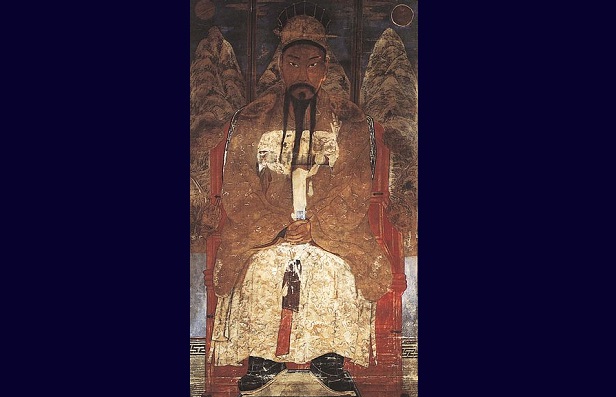
The first Korean kingdom was allegedly founded by the legendary King Dangun of the Bear Clan in 2333 BC (pictured above). Originally known as Joseon, this empire first appeared in the Samguk Yusa (Supplementary Tales of the Three Kingdoms), a book of ancient writings compiled by the late 13th-century monk Iryeon. According to Iryeon, Dangun’s rise to power involved gods, wild animals, and one really unusual relationship.
The legend holds that Hwan-in, the king of Heaven, was asked by his son Hwan-ung if he could rule his own kingdom on Earth. After a survey to determine the best spot, Hwan-ung was sent down to Earth with 3,000 followers and three heavenly treasures. He arrived at a sandalwood tree on Mt. Taebaek-san, where he built his capital of Shinshi. He appointed the spirits of Wind, Rain, and Cloud as ministers of a government that developed the first laws.
Shortly afterward, a bear and a tiger came to Lord Hwan-ung, asking to be made into humans. Hwan-ung told them to stay in a cave for 100 days, eating only a bundle of mugwort and 20 bulbs of garlic. The tiger gave up halfway through, but the bear completed the task and became a woman. The bear-woman, Ungnyeo, gave offerings of gratitude to Hwan-ung, but then he noticed she had no husband. Hwan-ung transformed into a man so he could sleep with her, and she gave birth to Dangun, founder of Joseon, the first Korean kingdom.
Dangun ruled for 1,500 years before retiring to the mountains and transforming into an immortal mountain god. Naturally, this is all pure myth, and the founding date of 2333 BC listed in medieval documents isn’t supported by the archaeological record. The legendary kingdom is sometimes linked with the early Mumun culture, which emerged in 1500 BC and was characterized by a novel pottery style. The name Dangun may have derived from an early leadership title meaning “altar king,” and the date 2333 BC probably came from cross-referencing Chinese historical dates that are equally fictional.
But the legend of Joseon was popular, and when King Taejo founded a Confucian dynasty in 1392, he adopted the legendary name for his new empire. The original Joseon then became known as Gojoseon (old Joseon). Today, many South Korean textbooks still include the legends of Dangun and the founding of Joseon as if they were fact, and North Korea stills calls itself by the name Joseon.
6 Pagan and Tagaung

The earliest histories of Burma combined fact and oral legends, making them unreliable but entertaining. The kings of Burma traced their legitimacy back to the medieval kingdom of Pagan, which had a legendary king named Pyusawhti (pictured above). Pyusawhti was born of the union of a sun god and a Naga dragon princess. Later, when the kingdom was being terrorized by enemies known as the Gourd, the Tiger, the Bird, the Boar, and the Squirrel, Pyusawhti defeated them one by one. In later chronicles, the Bird was depicted as the most fearsome enemy, devouring a tribute of seven maidens every week.
However, in the early 19th century, this historical tradition was changed, perhaps to support the legitimacy of the ruling Konbaung dynasty. The members of the Pagan royal house were said to have been mere scions of the older kingdom of Tagaung, founded by a man named Abhiraza. Allegedly a member of the same Sakya clan as the Gautama Buddha, Abhiraza left his Indian homeland and established a new kingdom in Burma.
Royal historiographers then traced the lineage back into even murkier mythological periods. They even claimed that Konbaung rulers could ultimately trace their origins all the way back to the very first “king of the world,” Maha Thammada, a man who supposedly descended from the Sun itself. Thus, Burmese kings referred to themselves as members of the “solar race.”
5 Xia Dynasty Of China

China’s first dynasty, the Xia kingdom has quite a controversial history. Evidently, Xia historical records are so mixed with mythical ideas that the reality is still hotly debated by Chinese historians. However, archaeological evidence actually supports some mundane elements of the legends.
The Chinese emperor who founded the Xi dynasty was Huang Di, the Yellow Emperor (pictured above), who supposedly ruled for a century. He allegedly expanded China’s borders and personally invented bureaucracy, writing, silk harvesting, medicine, boats, and wheeled devices.
The Yellow Emperor was followed by three “sage kings” named Yao, Shun, and Yu, each one known for his wisdom. Yao is said to have skipped over his own sons to pass the throne to Shun, a man he considered the most righteous candidate for the throne. Shun was famous for his strict filial piety, despite the fact that his family was wicked and tried to kill him. Yu was most notable for developing a system for controlling flooding on the Yellow River and establishing the system of dynasty rule. Yu’s descendants would go on to rule the Xia for generations.
The final king of the dynasty was known as Jie or Di Gui. However, he was considered a wicked ruler. Some sources explain his wickedness as a basic lack of virtue, but others emphasize his sexual immorality. Heaven expressed its unhappiness with Jie through astrological events, such as planets crossing paths in the sky. The height of such divine power was the appearance of two Suns in the sky, heralding the arrival of the new Shang dynasty. This was the legendary basis for the Mandate of Heaven concept which defined the ebb and flow of dynasties through Chinese history.
4 Dynasty Zero

The first dynasty of Egypt was supposedly founded by the legendary King Meni, otherwise known as Min or Menes in Greek sources. According to Herodotus, Egyptian priests claimed that Meni unified Upper and Lower Egypt, in addition to establishing the capital city of Memphis. An Egyptian historian named Manetho claimed that Meni was the first human king of Egypt (having inherited the throne from the god Horus) and had embarked on a foreign expedition of conquest before he was ignominiously eaten by a hippopotamus.
Other historians say Meni died after being stung by a wasp or hornet. Another curious legend involves Meni being chased by his own dogs, falling into a lake, and being rescued by a helpful crocodile.
However, the tradition of a king named Meni doesn’t seem to have emerged until the 18th dynasty. It’s possible that he might actually be the same man as an early king named Narmer, a man who ruled in the south and warred against the north.
Traditionally, Narmer was the founder of the first Egyptian dynasty, but some believe he was a member of an even earlier kingdom dubbed Dynasty Zero by modern scholars. However, the leaders of Dynasty Zero might not have been true pharaohs as they hadn’t unified the country. Regardless, a ceremonial palette found in the ruins of a temple to Horus in Hierakonpolis show Narmer taking the form of a bull to attack enemies outside the city wall.
3 Kirat Kings
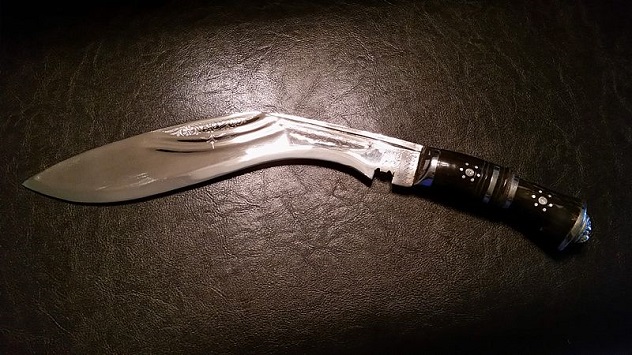
The first major kingdom of Nepal was the Kirat dynasty. The Kirat people are believed to have migrated into the Kathmandu Valley in the ninth or eighth centuries BC. Twenty-nine Kirat kings were said to have ruled over a period of 1,225 years, although little is known about their historical reality, except for the fact they were shepherds who liked to carry long knives.
Their dynasty was supposedly founded by Yalambar, a king who defeated the region’s Abhir rulers. Yalambar is said to have met with Indra, lord of Heaven, and to have participated in the battles described in the Mahabharata. During these conflicts, humans and gods fought side by side. According to the legend, Yalambar intended to join the losing side, the Kauravas, but Lord Krishna realized his intention. To avoid a prolonged and bloody war, Krishna neutralized the Kirat forces by cutting off Yalambar’s head.
The story goes that during the reign of the seventh Kirat king, Jitedasti, the kingdom was visited by the Gautama Buddha. He was allowed to preach, but he found few converts. Jitedasti is also said to have participated in the battle of Mahabharata, but this doesn’t make much chronological sense. The kingdom is said to have finally fallen during the reign of the weak king Gasti, who was overthrown by Nimisha, ruler of the aggressive neighboring Sombanshi people.
2 Magna Hungaria
The nomadic ancestors of the Hungarian people are believed to have originated in western Siberia. They were a Ugric people, distantly related to the Finns, who became isolated and influenced by the Iranian language of their neighbors. They later migrated westward across the Urals near to modern Bashkiria, but the reasons for the move are largely lost to history. By the time they settled in the Carpathian Basin, their geographical point of origin was unknown.
In the 13th century, the Hungarian king, Bela IV, sent a pair of Dominican monks to the east. They were to search for a homeland they referred to as Magna Hungaria. After initially engaging in a failed search north of the Caucasus (where ancient encampments from the migration period remained), one of the monks died. The survivor, Julianus, moved north to explore the Volga area. There he found distant relatives of the Hungarians, which was apparently enough to satisfy him.
Many Hungarian legends link their origins with the mighty empire of Attila the Hun. One prominent legend speaks of two brothers, Hunor and Magor, who were sons of a great hunter named Nimrod or Menrot. One day, they were hunting with their men when they saw a beautiful white stag. The brothers chased after the animal until they lost it in a swamp. Frustrated, they decided to make camp, but in the morning, they awoke to find themselves on a beautiful, fertile island.
Hoping to settle there, the brothers rode home to secure their father’s blessing. But when they returned home, they spotted a group of dancing women. The brothers seized two of the girls and rode off, inspiring their men to follow suit. (However, in some versions of the story, the women turn into fairies and fly away just in time.) Magor then went on to become the father of the Hungarian Magyar people, while Hunor became the father of the Huns.
1 Western Europe’s Trojan Founders
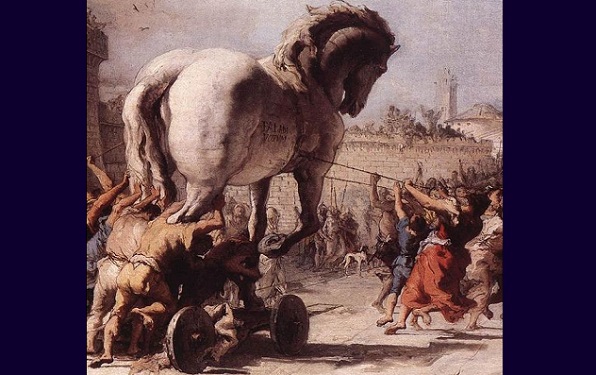
Roman legends occasionally asserted a Trojan origin for their civilization. Such a concept was later adopted in the medieval period. This allowed royal dynasties to assert the legitimacy of their claims to parts of the former Roman Empire. Tales of Trojan founders can be seen in the legends of the Goths, Venetians, Scandinavians, Byzantines, Normans, and Turks. And that’s not mentioning two of the most powerful countries in Western Europe: France and England.
In the seventh century, a monk named Fredegar developed the Trojan origin myth of the French, claiming that exiles from the Trojan War had split into two groups following the death of their king, Priam. One group settled in Macedonia, becoming the ancestors of Alexander the Great, while others settled in Phrygia under a king named Friga. Afterward, this second group migrated to the area between the Rhine and the Danube, all while serving under a second king named Francio or Francus. There, they were said to have begun construction on a replica of the city of Troy, but the project was never completed.
Variations of the Trojan origin myth were repeated over the years, depending on how politically useful it was to have a common origin with the Italians. At one point, one writer even suggested that the Trojans themselves had descended from the Gauls, thus transforming the story into a myth of homecoming.
Meanwhile, in 12th-century England, Geoffrey of Monmouth wrote the Historia Regnum Britanniae (The History of the Kings of Britain), a book which detailed how a Trojan prince named Brutus founded Britain around the 13th century BC. Before his birth in Italy, it was foretold how Brutus would kill his parents, be exiled, and then discover “the highest pitch of glory.” According to Geoffrey of Monmouth, the prophecy came true.
After killing his mother in childbirth and his father in a hunting accident, Brutus was exiled at age 15. After traveling to Greece, he freed 7,000 Trojans who’d been enslaved by the Greeks. Guided by the goddess Diana, Brutus led his people to Albion, an island which had no inhabitants except a few giants. He then named his kingdom Britain and was followed by 99 more kings, but it all came to an end when the country was finally invaded by Saxons in the ninth century AD.
In 30,000 years, David Tormsen’s Listverse articles will form the basis of the origin myths of a civilization that doesn’t exist yet. When they rediscover nihilism, “Tormsen is Dead” will become a famous but misunderstood quote. Email him here.
